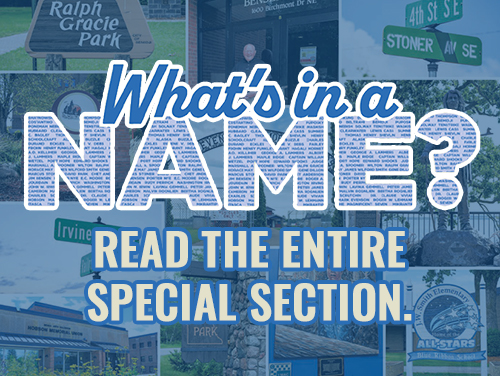Editor's note: This is part of a 20-story series titled "What's in a name?" completed by Pioneer reporters for our 2022 Annual Report. Read more of the section by clicking the embed at the bottom of this article.
Nymore is a name heard a lot around the Bemidji area.
ADVERTISEMENT
For most, it’s a name of a dog park, a hockey arena and a beach. What many do not know is how the area of Nymore got its name.
The namesake originated from two men, Porter Nye and E.C. Moore, in the festive lake town. Nye was a local farmer and Moore was a promoter for a sawmill.
Moore did not own the sawmill and suggested it become a homestead, but with a compromise the sawmill turned into a village and later a town owned by Moore.
With the line of work both Nye and Moore were involved in, they found each other and became partners.

Their names were combined, and it was first known as Nye-Moore and later became Nymore. Nymore was considered by most in the community to be the poor cousin of the town of Bemidji. A town that depended on the sawmill economy.
The town of Nymore was connected with the entrepreneurs of the Crookston Lumber Company and started Nymore mill in 1907.
With the success of the Crookston Lumber Company and its own mill company, Nymore became a town of job opportunities. Which later became streets and locations named Nymore around the Bemidji area.
ADVERTISEMENT
The Nymore mill was eventually bought out and was under the ownership of W.A. Gould and J.M. Richards, and purchased as a larger plant belonging to the Foley-Bean Lumber Company in Milaca.
This mill moved into the city of Bemidji and was placed on the southeastern shore of Lake Bemidji. The mill was placed at the end of two streets which eventually became the Nymore street address we know today.
A post office, bank, churches, saloons and more were built to meet the needs of the labor force in Nymore.
With the changing times the town went bankrupt and was annexed into the city of Bemidji. A disastrous fire of 1918 destroyed the rest of the town of Nymore.
Although the town was no longer, the history of the town still lives in on in the region and community.









